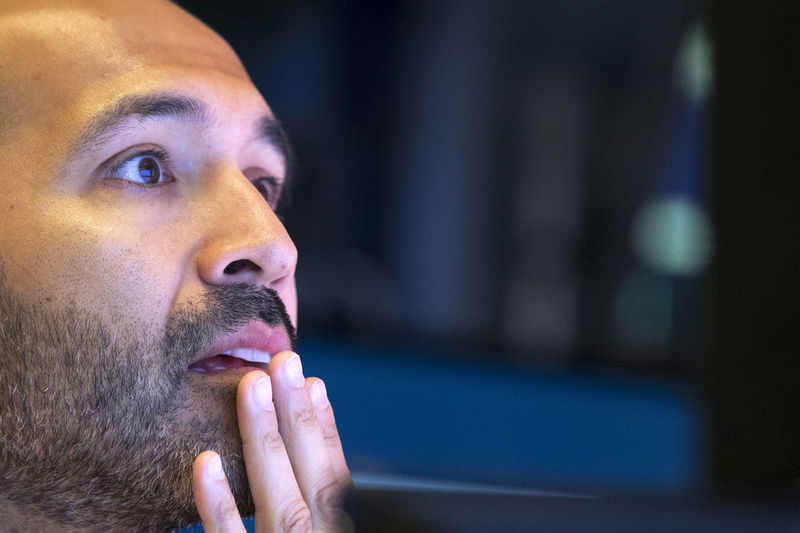A year ago, the suggestion that the price of gold would be above US$1,500 by the end of 2019 would have drawn odd stares, yet here we are above that level. Analysts are scrambling to reset their targets for the end of the year, 2020, and beyond.
The next milestone is the 2011 peak around US$1,900. Gold already jumped US$350 per ounce in the past 12 months, so it wouldn’t be a surprise to see it move that much again by the end of 2020.
Pundits are starting to see the recovery as the beginning of a long-term rally, and gold at US$3,000 is already being bounced around as a possible level.
Let’s take a look at the reason for the bounce in the past year and try to determine if gold exposure should be in your portfolio heading into 2020.
Interest rates Gold tends to find support when interest rates are moving lower. This is a large reason for the rally in the past year.
Leading up to the fall of 2018, most analysts expected the U.S. Federal Reserve to continue on its rate-hike path. The market initially expected the central bank to increase interest rates three times in 2019, supported by strong economic growth, low unemployment, and the threat of accelerating inflation.
The stock market correction through the end of the year partly came about as a result of concerns the Fed could be tightening too quickly. That might have forced the Fed to consider slowing things down. The increase in trade tensions between the United States is likely the larger cause of the shift in the Fed’s mood. By the end of the first quarter of this year, it was evident there would not be three hikes, and gold started to pick up a tailwind.
As we finished Q2, traders started pricing in rate cuts, and the Fed confirmed with a quarter-point reduction in July. This is the reason for the gold surge from early June through the end of August. With pundits now debating the number of cuts that could be on the way for the rest of 2019 and through 2020, gold is getting support.
Gold doesn’t provide any yield, so it is at a disadvantage when investors can get decent returns from fixed-income alternatives. When rates fall, the opportunity cost of owning gold drops, making it more attractive for investors.
Bond yields Roughly $17 trillion in global government bonds is now at negative yields. The trend is spreading, and this is providing a boost to gold demand. Big investment funds normally hold significant amounts of government bonds, but the idea of getting back less than you lend isn’t overly appealing, so gold’s zero yield starts to become more attractive.
Currency battles Central banks around the world are cutting interest rates in an effort to reduce the economic impact of the ongoing trade war between the United States and China. As fears grow that a global recession could be on the way, one strategy countries can employ is to weaken their currencies. This can often be achieved through lower rates.
The fear in the market is that a currency war could be brewing, and that puts people’s purchasing power at risk. One way to protect capital is to own gold, which is priced in U.S. dollars. The American currency is still perceived as the most attractive in turbulent times.
Is a big gold spike coming? A number of factors could combine to drive gold much higher in the coming months and years. The extension of the trade battle between the United States and Canada is the highest-profile threat. However, a number of other geopolitical situations could have a large impact.
A no-deal Brexit is looking more likely. As the U.K. and the E.U. get closer to the October 31st deadline without an agreement, investors are likely to rush into gold as a safe haven for their capital. In the event the U.K. leaves the E.U. without a reasonable agreement, gold could continue to rally on a potential financial crisis. Italy’s banks are wobbly, and a messy Brexit could knock them over and send a financial shock through Europe.
Rising tensions between India and Pakistan are cause for concern. Unrest in the Middle East is also on the radar.
A major geopolitical event in the next couple of years coupled with an economic downturn could potentially push gold to US$3,000 per ounce.
Hopefully, this won’t materialize, but investors should probably have some gold exposure as a portfolio hedge.
One option would be to buy the large miners, such as Barrick Gold. Barrick’s stock price doubled in the past year but still appears cheap in the current environment. If gold continues to move higher, this company should become a profit machine.
Fool contributor Andrew Walker owns shares of Barrick Gold.
The Motley Fool’s purpose is to help the world invest, better. Click here now for your free subscription to Take Stock, The Motley Fool Canada’s free investing newsletter. Packed with stock ideas and investing advice, it is essential reading for anyone looking to build and grow their wealth in the years ahead. Motley Fool Canada 2019
